Explainer
- Explainer
- Racism
'They ruled our lives': What impact has slavery had in Australia?
Many Australians might think that slavery never reached our shores but the history books tell a different story. So what did slavery look like in Australia?
Waskam Emelda Davis was sitting in her favourite orange armchair in her loungeroom on a cool winter's day when her phone rang.
"Did you just hear this?" came her friend's voice down the line.
Prime Minister Scott Morrison had just been on radio, her friend informed her, claiming there was no history of slavery in Australia.
"I was enraged," says Davis.
The comments in June 2020, which the Prime Minister later apologised for and clarified, prompted a fresh examination of Australia's colonial history at the height of a reinvigorated global Black Lives Matter movement.
The debate over the history of slavery in Australia is one that resurfaces on a regular basis, much to the chagrin of the tens of thousands of Indigenous workers who have been fighting for decades to reclaim wages that were withheld from them under discriminatory laws until the 1970s.
Each time, Davis dredges up the painful stories from her family's past in a bid to set the record straight about a struggle stretching back more than a century.
The 58-year-old has spent her life advocating for the rights of Australian South Sea Islander people – the descendants of men, women and children known as "sugar slaves" who were taken from the Pacific islands and forced into hard labour in Australia. She chairs the Australian South Sea Islanders Port Jackson organisation in Sydney.
"Slavery is slavery. You can't dress it up or dress it down," Davis says. "The kidnapping, the coercing, the stealing and the serious abuses that happened to our people ... this is something that's handed down through generations.''
So how did slavery operate in Australia? How long did the practices continue? And how has it made a lasting impact on the nation?
A warning to Aboriginal and Torres Strait Islander readers: this article includes images of deceased people.
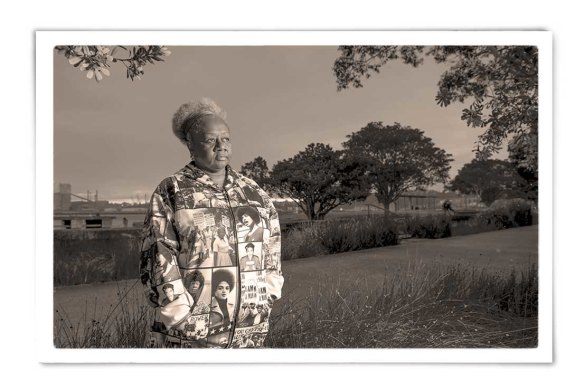
Waskam Emelda Davis: "Slavery is slavery."Credit: Rhett Wyman, digitally altered
What forms of slavery were in Australia?
Article 1 of the United Nations Slavery Convention defines slavery as "the status or condition of a person over whom any or all of the powers attaching to the right of ownership are exercised".
Around the time of colonisation in Australia – the First Fleet arrived in 1788 – an anti-slavery movement was growing in Britain. The British Parliament abolished the Atlantic slave trade in 1807 and passed the Slavery Abolition Act in 1833.
As such, there was to be no slave trade in Australia. However numerous historians, legal experts and government officials have found that the controls imposed on Pacific Islander and First Nations peoples essentially amounted to slavery.
"It is true that Australia was not a 'slave state' in the manner of the American South," writes Stephen Gray in the Australian Indigenous Law Review.
"Nevertheless, employers exercised a high degree of control over 'their' Aboriginal workers who were, in some cases, bought and sold as chattels … Employers exercised a form of 'legal coercion' over their workers in a manner consistent with the legal interpretation of slavery."
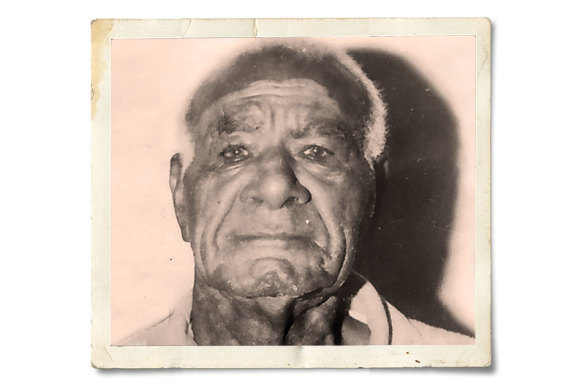
Emelda's grandfather, Moses Topay Enares.
What was blackbirding?
Emelda Davis says her grandfather was 12 when he went for a swim at the beach near his home on the island of Tanauta (formerly Tanna) in Vanuatu and never returned.
He was kidnapped in the late 1800s, she says, and taken to Bundaberg, in north Queensland, where he was put to work in the cane fields.
At least 50,000 people, mostly men, from 80 Melanesian islands were brought by boat to work in Australia's agriculture, maritime and sugar industries. Some went voluntarily but many were coerced or kidnapped. Their wages were less than a third of other workers.
The practice, known as blackbirding, was sanctioned by various Queensland laws from the mid-1860s to 1904. Several members of parliament grew wealthy through this system.
Those who chose to leave the islands signed three-year indenture agreements, explains University of Queensland historian Professor Clive Moore, but few knew what awaited them in Australia.
He says the indenture system has often been called "a new form of slavery".
"Just think, you're a capitalist in the 1830s and 1840s and they've just abolished slavery and you want cheap labour, so you scratch your head and you say, 'Well, how can I get cheap labour?'.
"[Islanders] were legally indentured, but then you've got to ask, did they understand the indenture system? Often no, they wouldn't have had a clue what it really was ... therefore you might say the contract's invalid," he says.
Moore estimates 15,000 South Sea Islander people – around a third of the workforce – died from common diseases during their first year in Australia due to low immunity levels.
"The mortality figures are horrific," he says. "The government must have known and yet it did absolutely nothing to try to stop it."
When the White Australia policy was enacted in 1901, the government ordered the mass deportation of all South Sea Islander people, sparking outrage among those who had built lives on the mainland and wished to stay.
Ultimately, around 5000 workers were forcibly deported. In a cruel twist of fate, their deportations were funded by the wages of deceased South Sea Islanders, whose estates were controlled by the government.
Those who remained were subject to racial discrimination and embarked on a long journey to carve out their own place in Australian society.
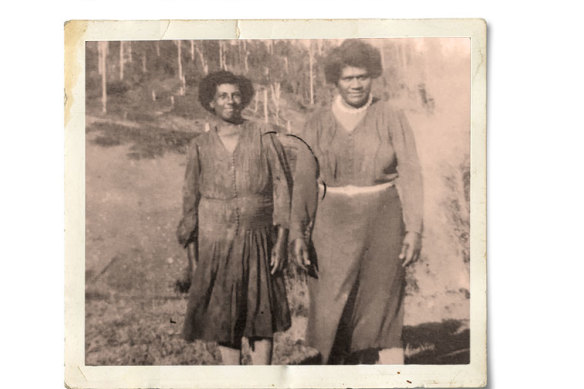
Emelda Davis' grandmother, Emily Enares (right), with Lola Noter.
How did 'protection' usher in a new form of slavery?
It could be argued that what happened to South Sea Islander workers was a precursor to the systematic wage controls imposed on Aboriginal and Torres Strait Islander groups from around the 1890s, notably in the pearling and cattle industries.
In the late 19th century, every mainland state and the Northern Territory enacted laws, known as the protection acts, to control the lives of Indigenous people. Prior to this, Aboriginal and Torres Strait Islander workers were routinely exploited.
Historian Dr Ros Kidd says there is evidence that women were used as sex slaves, children were kidnapped and Aboriginal stockmen were encouraged to form opium addictions to make them reliant on their employers, who supplied the drug.
Kidd says the protection acts were largely introduced to ensure industries remained profitable rather than to protect the welfare of Indigenous people.
"Part of the problem, as the authorities saw it, was the rise of inter-racial children and the fact that we, as the whites, needed to assert some authority and regulation over all of this," she says.
Under the protection acts, most Aboriginal people were removed from their homelands and forced to live on missions or reserves run by the church or government, respectively. Some South Sea Islander people were subjected to the same controls.
Aboriginal people were forbidden from speaking their native languages or practising their cultures, and children were separated from their families and placed in dormitories.
Employment laws varied from state to state but, for the most part, the wages of Aboriginal people were diverted to government-managed trust funds, while local protectors managed the residue as legal trustees. Official documents reveal protectors habitually defrauded Aboriginal workers for much of the 20th century.
For most Queensland workers, the minimum monthly wage was set at five shillings (around $24), less than one-eighth of the non-Indigenous wage.
Sometimes, the worker would receive a small portion of that amount as pocket money but, in many cases, they received nothing. Workers could, in theory, withdraw from their trust account for necessities but only with permission from the local protector. Requests were often refused, or workers were falsely told they had no money.
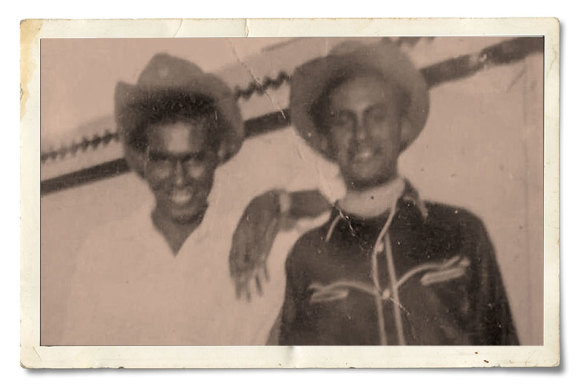
Roy Savo, right, with another stockman.
Roy Savo is a former stockman who spent a decade working on Queensland cattle stations from the age of 13. He says he didn't see physical money until he was almost 20.
"When we wanted to go to the shop, they'd just write us a note and say, 'Take that to the shop'," he says. "That's how we got through life."
The 80-year-old says the bosses would not call the Aboriginal workers by their names, referring to them only as "boy".
"They made you feel so low. When I think back, we were just no one, nothing. We had no chance against the white people, they just ruled our lives. We were one step from being an animal. In some places you were told to sit out and eat with the animals anyway, out in the wood heap."
When he was about 19, Savo ran away from his "job". Dodging authorities, he continued to work at various cattle stations and railways across far north Queensland and the Torres Strait, before meeting his wife and starting a family in Silkwood, south of Cairns.
In Western Australia, most employers weren't legally required to pay Aboriginal workers at all until the 1940s, so long as they provided rations, clothing and blankets.
Many workers in the Northern Territory died from starvation in the 1920s and '30s due to poor rations, records show. One anthropologist reported that on one station, only 10 children survived from 51 births during a five-year period. The government declined to intervene. The chief protector in the Northern Territory said in 1927 that Aboriginal pastoral workers were "kept in a servitude that is nothing short of slavery".
Those who absconded from a work contract could be whipped, jailed or arrested and brought back in chains.
Aboriginal children were routinely indentured to work, with boys sent to farms and pastoral stations and girls to domestic service for non-Indigenous families.
Their wages were supposed to be administered similarly to the adults' but there was little to no regulation to ensure employers complied with the law.
Protectors themselves described Queensland's Aboriginal wage system as a "farce" in the 1940s, says Kidd, with workers "entirely at the mercy of employers who simply doctored the books".
She notes the broad lack of oversight prompted one protector in the Northern Territory to remark: "I think it is about time that slavery is put a stop to among the natives of Australia."
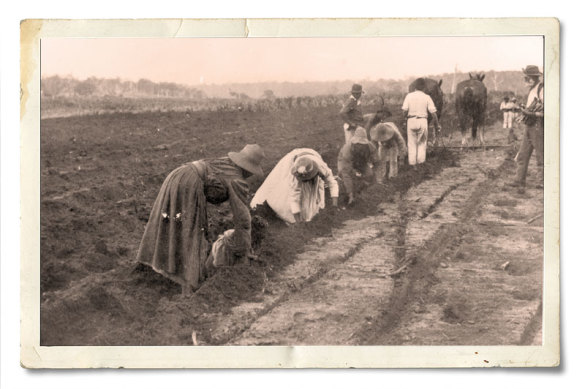
South Sea Islander women planting sugar cane by hand at Bingera, Queensland, about 1897.Credit: State Library of Queensland
When did this kind of slavery end?
The protection acts were gradually amended and replaced throughout the second half of the 20th century but some controls endured until at least 1972 – the year Gough Whitlam was elected prime minister.
And yet when the laws were repealed, the money held in trust was never returned to Aboriginal workers. The unpaid funds have become known as the stolen wages.
In Queensland, Aboriginal trust funds were used to cover government revenue shortfalls. Millions were spent on regional hospitals. Hundreds of thousands of dollars were used to facilitate the forcible removal of Aboriginal families from their traditional lands.
In today's money, Kidd conservatively estimates the missing or misappropriated funds to total $500 million in Queensland alone.
"The government made a lot of money exploiting the savings accounts for its own profit," she says. "This is while people were starving and dying in need of these payments."
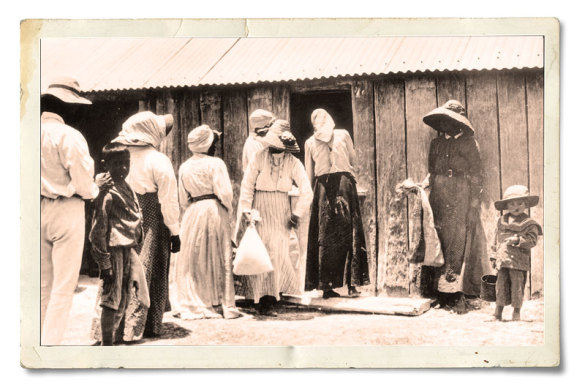
People lining up for flour rations at the Barambah Aboriginal Settlement (now known as Cherbourg) in Queensland in 1911. Credit: State Library of Queensland
For decades, Aboriginal and Torres Strait Islander people have been fighting to get that money back.
In Queensland, thousands joined a class action to sue the government. In 2019, the state government agreed to a landmark $190 million settlement. It was the largest settlement for Indigenous people outside native title and the fifth-largest class action settlement in Australian history.
But it was less than half what the workers were owed and by the time the settlement was reached, more than half of the claimants had died.
Similar class actions are being investigated in NSW and the NT while one has been launched in WA. Australian South Sea Islanders are also fighting for reparations for an estimated $38 million in misspent wages of deceased workers.
A year after Queensland's class action was settled, Roy Savo still doesn't know when, or how much, he will be paid for a decade's hard labour. He fears it will be much less than he had hoped.
"I wanted to buy a home," he says. "But looking at what I'm going to get now, I'm thinking it would be better putting it into some trust or something for my funeral. I come in with nothing, go out with nothing, I suppose."
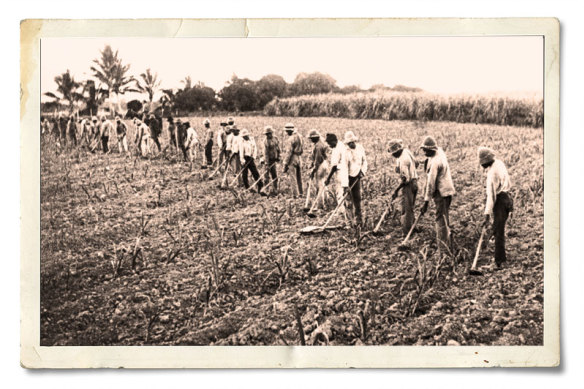
South Sea Islander labourers hoeing a field, Herbert River, Queensland, c. 1902. Credit: SLQ
What is the legacy of slavery in Australia?
As fate would have it, Emelda Davis' housing unit in the inner-Sydney suburb of Pyrmont looks out to the refinery where the raw sugar harvested by South Sea Islanders was once processed.
It's widely acknowledged much of Australia's wealth across the sugar, pastoral and maritime industries was built on the backs of Indigenous and South Sea Islander labour.
"The contribution of the 60-odd thousand [South Sea Islanders], coupled with our First Nations families, is quite significant in establishing what we call today the lucky country," Davis says. "Our legacy is what people are thriving off today."
At the Redcliffe Hospital, north of Brisbane, there is a plaque to acknowledge that it was built, in part, with a $1.7 million loan from Aboriginal trust funds in the 1960s.
Similar plaques have been installed across Queensland, at the recommendation of a 2016 taskforce, to recognise the labour and financial contributions of Aboriginal and Torres Strait Islander people.
Yet many within these communities still live in poverty. Disparities in health, education and employment between Indigenous and non-Indigenous people are well documented.
Ros Kidd says this disadvantage is "inextricably linked" with historical practices.
She says Aboriginal and Torres Strait Islander people were excluded from the capitalist society.
"They trapped people in what I would call engineered disadvantage – because it didn't happen by coincidence, it didn't happen through an unfortunate set of circumstances. All of these conditions and this poverty was specific government policy and practice."
Australian South Sea Islanders, too, have inherited generations of trauma and disadvantage. The community was officially recognised as a distinct cultural group in 1994, but without targeted policies Davis says they often "fall through the cracks", missing out on support programs tailored for Indigenous Australians.
"We're at a point where it's completely desperate. There's no hope in looking to our government for anything. It's just constant hoop-jumping and lining up against everybody else in the queues for rations," she says.
The legacy of trauma is also felt in the Pacific Islands.
On a beach in Vanuatu, there's a spot called Howling Rock, where mothers would mourn their husbands and children who disappeared. There are songs, passed through the generations, warning not to go to certain beaches for risk of being taken.
But new generations in Australia have inherited something else from their ancestors, too: strength.
Queensland artist Dylan Mooney, 24, has Aboriginal, Torres Strait Islander and South Sea Islander heritage. His paternal great-great-grandparents were blackbirded from Vanuatu. His great-great-grandfather worked on sugar plantations in northern NSW while his great-great-grandmother, Fanny Togo, was sold as a house servant in Sydney.
Mooney says knowing what his ancestors went through has only strengthened his sense of identity and pride.
"I carry that with me every day – that strength, that resilience, that story of survival."
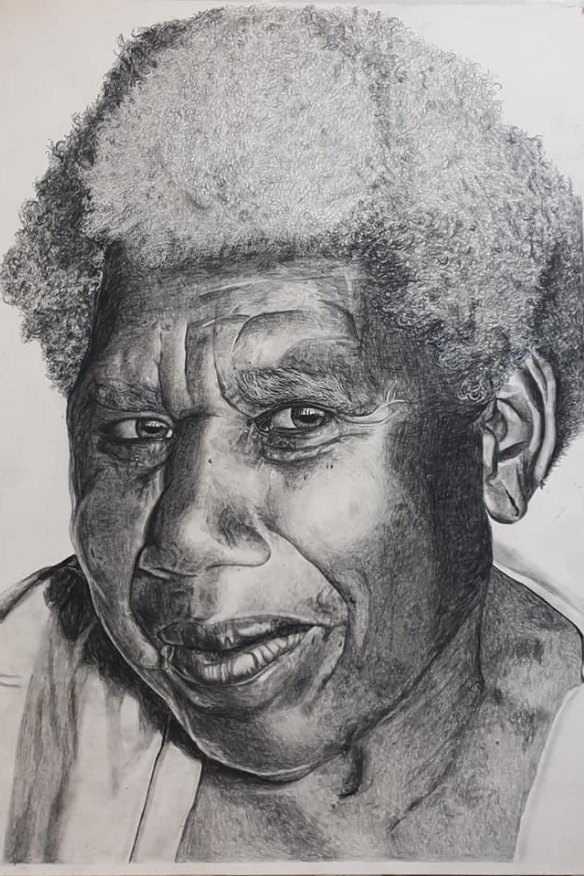
Dylan Mooney's portrait of his great-great-grandmother, Fanny Togo, who was a domestic servant in Sydney.Credit: Dylan Mooney
Let us explain
If you'd like some expert background on an issue or a news event, drop us a line at explainers@smh.com.au or explainers@theage.com.au. Read more explainers here.